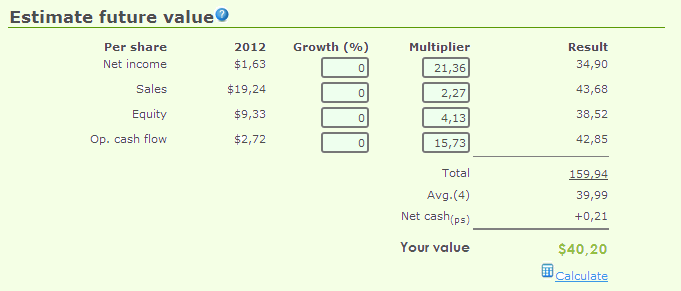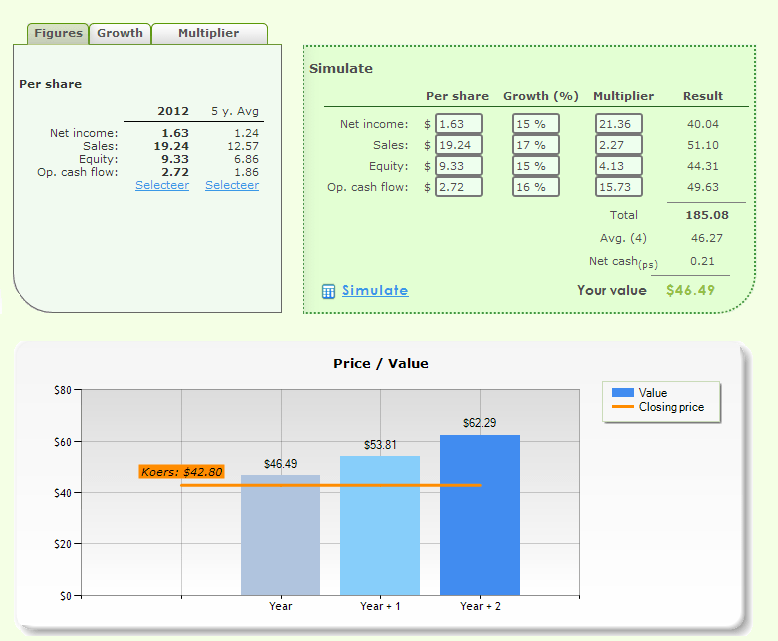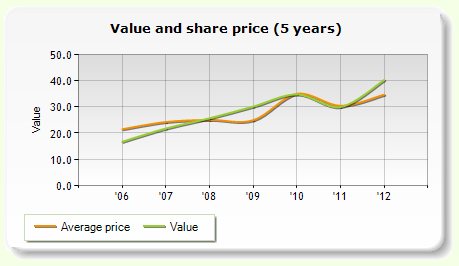Calculate the value and plan ahead
What is the real value of a company?
Other sources usually define the value as a multiple of the company's earnings. This is known as the P/E ratio and is a rather rudimentary way of appreciating value.
Excelco incorporates not one but four factors. We calculate a company's value on the basis of turnover, earnings, equity and cash flow per share.

The value thus calculated can be described as the average of a multiple of earnings, a multiple of turnover, etc. We call this "multiple" the multiplier.
There are thus four multipliers for resp. earnings, turnover, equity and cash flow.

Excelco calculates these multipliers based on the ratios price/earnings, price/turnover, price/equity and price/cash flow of the last seven years and takes an average.
Our software allows you to change the value of the multipliers yourself. For instance, if the multiplier for net earnings is set at 8 and you find this too low, you can increase the multiplier.
The value is calculated based on earnings, turnover, equity and cash flow per share for the last financial year. In the case of growth companies, a percentage of growth rate may be added.
Again, you can change this growth rate yourself to estimate the future value of companies whose value drivers are increasing.
In the case of fast growing companies, this is the best means to avoid the calculated value being permanently underestimated.

Think two years ahead
Excelco's value calculation is completely transparent and clear to everyone!
Our software also allows you to perform "simulations" in order to calculate the value over the next two years, taking into account the average growth.
Companies with an average growth rate of 10% see their value increase significantly each year.

Value and price
The orange line shows the evolution of the average price per year on the stock exchange, while the green line shows the evolution of the value. The graph shows an adequate correlation between value and price. There are periods of overvaluation and periods of undervaluation (buying opportunities).
